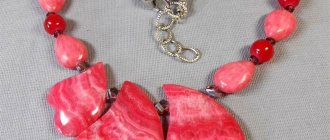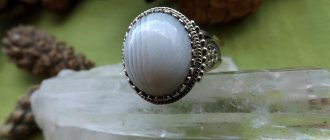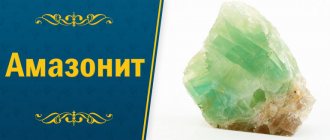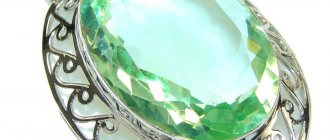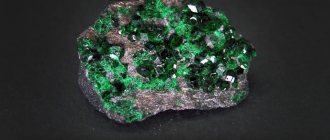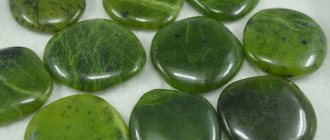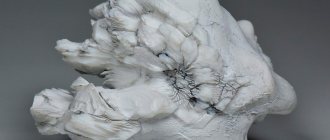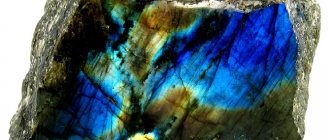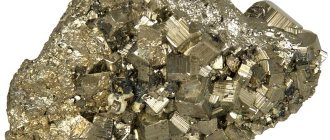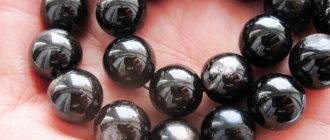Jewelry craftsmen often use zircon when creating jewelry. It became known in ancient times. Since then he has been in great demand. Some people incorrectly consider it an artificial mineral. However, this is not true. The fact is that there are many of its deposits. For this reason, there is no point in artificially synthesizing zircon.
Zircon amazes with its magnificence and deep shade. This is why people prefer it. In terms of color saturation, the stone can be compared with such precious minerals as ruby and emerald. He is worthy competition for them. High quality specimens are mined in Ceylon. Residents of Russia discovered the gem during the Middle Ages. They make it stand out from other stones.
When purchasing zircon, you should take into account the fact that it contains radioactive substances. The smallest amount of them is found in natural stones of medium size, endowed with a transparent structure or having a greenish color. Large minerals with deep and bright shades contain more significant amounts of these substances. Such specimens should not be stored at home or transported without appropriate labeling containing information about the presence of radioactive elements.
Zircon is a rather fragile stone compared to other gems of similar origin.
History and origin
The first country to introduce zircon to the world was Persia (modern Pakistan). The Persian name of the stone “zargun”, that is, “sunny, golden”, is explained by the fact that the first gems found were yellow, sunny in color. Today the name "jargon" is applied only to the yellow variety of the stone.
India also rightfully calls itself the birthplace of gems. Since the first centuries of our era, Indians and Persians mined this mineral, giving it the glory of the “little brother” of diamond, which has accompanied the stone for many centuries. Indeed, this is not in vain, because zircon is indeed endowed with diamond shine and hardness, only slightly inferior to diamond.
It is important! Zircon is an independent mineral, zirconium silicate. The name should not be confused with the metal zirconium, which was first extracted from zircon stone, since it occurs in nature only in the form of impurities. Zircon is also often called cubic zirconia - this is incorrect. Cubic zirconia is zirconium dioxide, an artificial cheap substitute for zircon, not related to natural stone.
In ancient times, people used zircon to create amulets. It was believed that this was a stone of power, capable of making a person a ruler. The ancient sages also discovered the power of the gem - the mineral helped expose a person to a lie, revealed intuitive abilities, endowing the owner with the gift of clairvoyance.
For a long time, the solar nugget was valued only by the Arabs. Centuries later, Russian merchants showed interest. The Renaissance brought zircon fame in Europe - Freemasons wore rings with this gem. People believed in the magical ability of the mineral to protect a soldier during battle.
It was believed that those brave men fighting in the front ranks would be luckier, so European mercenaries - the Swiss, Germans, Genoese - used red and yellow zircons as amulets.
Due to the injustice of fate, Europeans never took the nugget seriously, constantly confusing the stone with other precious minerals. And only at the beginning of the 20th century the stone began to be used by jewelers, and also found its place in industry.
Healing and magical properties of zircon
Ring with yellow zircon.
Photo: elisailana.com Since ancient times, people have worn amulets made of zircon, endowing it with the power of power. In ancient times, this stone was worn by sages. It was believed that zircon helped reveal lies and endowed the owner with intuition and the gift of foresight. Zircon promotes the development of memory and observation, protects against deceivers. An amulet with this stone attracts good luck and promotes wealth.
Place of Birth
The origin of the mineral is magmatic. The stone is found among granite, pegmatite and syenite rocks. The gem is mined mainly in the following territories:
- Islands of Sri Lanka.
- Thailand.
- Kampuchea.
- Vietnam.
- Burma.
- Islands of Madagascar.
- Tanzania.
Large deposits are being developed in Canada, the USA, Brazil, and Norway.
Zircon of jewelry value is considered a rare mineral. The weight of mined specimens often does not reach 2 carats. And large finds are very rare.
Where is zircon mined?
Sri Lanka, like many centuries ago, remains the main exporter of the mineral. In this country, they like to cut zircon “to look like a diamond” and sell it as a diamond, so the bad reputation of a “fake stone” largely comes from there.
An important supplier of stone is Sri Lanka.
Crystal deposits are also being developed in other countries:
- Madagascar;
- Brazil;
- USA;
- Canada;
- Norway.
No individual zircon deposits have been discovered in the Russian Federation. Sometimes the stone is found as an accompanying mineral in the diamond deposits of Yakutia, as well as in the Ural gem deposits.
Geologists most often find zircons in kimberlite pipes, in the thickness of granites and igneous rocks. Development is carried out in mines or using the quarry method. Jewelry pieces are found quite rarely. Most crystals are very small, their weight does not reach even one carat.
Physical properties
Zircon by its nature is a radioactive mineral, since its chemical composition contains impurities of uranium and rhodium. All nuggets emit background radiation slightly higher than the Earth's average. Green stones are considered dangerous to human health, since this shade is given to them by an admixture of uranium.
| Property | Description |
| Formula | ZrSiO4 |
| Hardness | 7,5 |
| Density | 4.6—4.7 g/cm³ |
| Cleavage | Implicit. |
| singonia | Tetragonal. |
| Kink | Uneven or conchoidal. |
| Shine | Diamond. |
| Transparency | Transparent, translucent or opaque. |
| Color | Brown, reddish-brown, colorless, gray, green. |
Up to 4% of the composition can be occupied by hafnium metal. In addition, the mineral may contain iron, aluminum, calcium and other rare earth elements. The presence of certain impurities determines the color of the nugget.
Natural zircon crystal has an unusual structure - the shape of a double pyramid. An interesting feature of most crystals is the fluorescence effect, noticeable under ultraviolet light.
White (colorless)
Natural white zircon is very beautiful. It is often obtained by heat treatment; untreated crystals are also found.
It is the colorless variety that is most loved by jewelry connoisseurs, since the dispersion characteristic of the mineral is most clearly manifested in it. In other colors it is less pronounced due to the rich color.
In the photo: colorless natural zircon stone 35.38 carats, Tanzania
It is thanks to this feature that colorless zircon is known as a natural imitation of a diamond, which is also characterized by an internal “fire” - a play of colors on the edges.
Cutters also choose the shapes preferred for diamonds for this stone. Therefore, zircon can be found in round brilliant and step cuts.
Color varieties
Nature has given birth to several subspecies of zircon, many of which have their own names:
- Hyacinth. The main color type of the mineral is red or reddish-brown. Shades range from ruby to dark brown.
- Jargon. Yellow nugget.
- Gray zircon. Often translucent or opaque.
- Malacon. The mineral is rich brown in color, turning black.
- Green zircon.
- Matar Diamond. A crystal clear, colorless stone used by jewelers as a diamond substitute.
- Starlit. Blue mineral.
Starlite, a blue-blue stone similar to sapphire, is also found in jewelry. This is not the natural color of the mineral; it is created by burning hyacinth. The disadvantage is the loss of color saturation over time. Green zircon is not used for making jewelry, as it carries a radioactive hazard to the human body.
Yellow
For a cut-quality zircon stone, a beautiful yellow color without additional shades is considered rare. This variety is referred to in the literature as "jargon", which is close to the English "zircon".
In the photo: set of yellow zircons 24.21 carats, Tanzania
Yellow zircon is a beautiful bright stone that is close in appearance to a fancy colored diamond. Golden stones are simply amazing when cut. One problem is that due to the fact that crystals of this color come to the market in extremely small quantities, it becomes difficult to select pairs and sets, but we are all the more proud of such sets.
Healing power
The healing capabilities of zircon, studied by lithotherapists, depend directly on its variety. Each color subtype is responsible for treating different functions of the human body.
Hyacinth
This mineral is associated with the cardiovascular system and blood flow, considered the most healing subtype of the mineral. This stone helps in the treatment of:
- coronary heart disease;
- nosebleeds;
- hypertension.
In addition, hyacinth increases the regenerative properties of the body, helping a person recover from surgery, wounds or serious injuries. The mineral accelerates the healing of both external and internal damaged tissues. For coronary heart disease, a pendant or necklace will help, and for regeneration purposes, a ring placed on the middle finger of the hand.
Jargon
This stone is responsible for the functioning of the liver, helping to cope with its most important function - removing toxic substances and toxins from the body. Wearing yellow mineral stimulates appetite. And a ring with jargon will help alleviate the condition of poisoning, including the consequences of alcohol.
Malacon
This nugget helps fight inflammation in the respiratory system. Malacon will alleviate the body's conditions in the following cases:
- colds;
- pneumonia;
- acute sinusitis;
- acute rhinitis.
The stone will also cope with advanced stages of sinusitis.
Matar Diamond
This colorless mineral maintains muscle tone in the human body. This talisman is especially relevant for people who want to lose excess weight and gain a slim figure.
Any of the subspecies has a beneficial effect on the human nervous system, relieving insomnia and bad dreams.
Healers believe that the mineral owes its healing properties to the unusual internal structure of its bipyramidal crystals. For lithotherapists, the pyramid acts as a healing figure, so nature has endowed zircon, which follows the contour of the double pyramid, with greater healing power.
Blue and cyan
The blue and light blue variety is the most valuable in natural zircon. These are incredibly intense shades from light bluish to intense electric blue, sometimes with greenish and cyan undertones. When cut, these stones are incredibly beautiful, and, probably, there are no other stones with a similar color; they cannot be confused with anything else.
The color is reminiscent of blue Paraiba tourmaline in its neon component, but zircons have pronounced dispersion - the decomposition of the color ray into spectrum components, so it is always accompanied by rainbow flashes on the edges.
In the photo: blue Cambodian zircon 30.35 carats
The blue color of zircons is the result of heat treatment of Cambodian brown crystals. Despite this, the stone is popular, especially in the USA and Europe.
Large specimens with high purity are rare weighing more than 4-5 carats.
The magic of mineral
Zircon is a stone of truth and justice. This gem not only does not tolerate deceivers, but also helps the owner to catch people in lies, hypocrisy and flattery, developing the owner’s intuitive abilities. If a fraudster dares to use a gem as a talisman or just a decoration, then the stone will repay him with an evil fate, bringing him to trial and imprisonment.
Zircon prefers to see a man in his owners. However, some girls can also count on friendship with the mineral.
The gem favors female representatives who are engaged in scientific activities. The stone will give them clarity of mind, strengthen logical thinking, and help them consider assigned tasks from different angles.
The mineral provides support to businessmen, especially beginners, who risk losing large sums of money. Such people need to have a gem amulet with them, at least until it becomes clear that the risk is justified.
Varieties such as jargon and hyacinth love bold innovators who risk everything without fear. These minerals favor developers of new products, discoverers of new lands, researchers, designers, inventors, all people who bring innovations to this world.
In industry
People began using the gem on an industrial scale about 90 years ago. The high cost of the stone did not allow it to be used everywhere.
Today, crystal and its alloys are used in the following industries:
- Nuclear energy;
- Chemical industry;
- Mining industry;
- Construction;
- Metallurgy;
- Production of medical products.
Compatibility with other stones
Zircon belongs to the minerals of two elements - Water and Earth, and Jupiter is the patron planet. This nugget is very selective about the proximity of other stones, categorically opposed to diamonds and rubies. The union with minerals of the fire element, in particular with garnet, also disappears.
Friendly aquatic and terrestrial minerals can become the best neighbors of zircon. The exception is morion - with this gem there is incompatibility of the patronizing planets.
A combination of zircon with the following minerals is allowed:
- Heliotrope;
- Aventurine;
- Jasper;
- Chalcedony of all types, including agate;
- Turquoise;
- Malachite;
- Labrador;
- Emerald;
- Serpentine;
- Opal;
- Melanitis.
An unpredictable combination is considered to be an alliance with stones of the air element:
- Lapis lazuli;
- Chrysoprase;
- Amazonite;
- Smoky Quartz;
- Amethyst;
- Rhinestone.
No one can predict the behavior of gems in such a neighborhood. As a result, everyone chooses for themselves whether to combine zircon with these stones or not.
Brown
The brown color of zircons is of natural origin. These colors are used for refining - obtaining more commercially attractive colors. However, brown color can also be beautiful, for example, incredibly pleasant brownish zircons come from Tanzania, which simultaneously contain notes of pink, peach, gray, and beige.
In unsaturated specimens, the play of color is remarkable, and with proper processing, faceted brown zircons can compete in beauty with cognac diamonds.a
In the photo: a pair of natural cushion-cut zircons 7.55 carats, Tanzania
Modest. Chic. If you are choosing a stone for men's jewelry, noble brownish zircon is an excellent option for both a ring and cufflinks.
Jewelry with mineral
Jewelry quality specimens are widely used in this industry. The best metal for the frame is considered to be yellow gold, less commonly silver. This mineral is not set in platinum, but you can find expensive luxury jewelry with different subtypes of the stone - malacon, hyacinth, starlite.
Transparent zircon crystals play the main role, taking the place of diamond substitutes. The brilliance of the gem is not inferior to that of a diamond, but costs several times less. The sale of jewelry is carried out in different pricing policies, depending on the type of stone, cut, and metal of the product:
- Earrings can be purchased for either 7 thousand rubles or 25 thousand.
- Prices for rings start at 7 thousand rubles.
- Pendants cost from 4 thousand rubles.
- A thin necklace with small pendants is estimated at 8-10 thousand rubles, but a massive product will cost 50-60 thousand.
Beads made from unprocessed hyacinth will cost about 4 thousand rubles. It is worth considering the fact that many jewelers replace zircon with cheaper cubic zirconia. Therefore, when buying jewelry, it is better to clarify the origin of the stone.
Applications of zircon
There are not many areas in which zircon is used. The stone is used as jewelry or ornamental material. Most often, it is set in yellow gold, sometimes silver is used, but not platinum.
Malacones, starlites and hyacinths are valued higher than other varieties. They are regularly included in exclusive headsets.
As a rule, the gem is used in earrings, rings, bracelets, and sometimes in pendants and tiaras. Occasionally you come across pendants and necklaces - they are primarily used for elite stones.
Diamonds are often imitated using transparent specimens. Such minerals are much cheaper than a diamond, but more expensive than cubic zirconia.
How to distinguish from an artificial fake?
The only imitation of natural zircon is cubic zirconia - zirconium metal oxide. There are two ways to determine whether what you have in front of you is an original or a fake:
- In terms of weight, cubic zirconia will weigh down your hand.
- According to optical characteristics. A distinctive feature of zircon is the double shine of its faces, due to the bipyramidal structure of the mineral. This effect is visible under a magnifying glass in bright light. Cubic zirconia is not endowed with such a property.
Another common type of fraud is the replacement of diamonds with zircon. The magnifying glass comes to the rescue again - the zircon gives out a double glow of its facets, which is not characteristic of a diamond.
Red
The luxurious red color of zircons in Russia made such an impression that this variety was given the name hyacinth, in honor of the flower.
In the photo: red zircon hyacinth 10.52 carats, Tanzania
This zircon is never found in pure spectral red color; it contains additional shades: pink, orangeish, brownish, violet, burgundy, which are perceived as red. In this way, zircon resembles malaya garnet.
Stone hyacinth is highly valued among collectors and fans of jewelry.
How to wear and care?
Despite being picky about its neighbors, the mineral is completely undemanding when it comes to purchasing according to lunar phases or days of the week. The stone either recognizes you as its owner or it doesn’t.
A gold hyacinth ring is traditionally worn on the middle finger of the right hand, while a silver piece should occupy the same place on the left hand. It is better not to expose any subtype of mineral to prolonged exposure to the sun, especially starlite (blue stone), which will quickly fade.
Precious jewelry fits perfectly into an elegant evening look. For everyday style, you can choose beautiful jewelry.
Despite the high hardness of the mineral, zircon is very fragile due to porosity. Therefore, jewelry requires careful use and protection from mechanical damage. A blow to any hard surface can cause cracks.
Cleaning of jewelry is done using a soap solution. Heavily soiled items can be cleaned with tooth powder. In rare cases, the use of light kitchen detergents is allowed. It is better to store jewelry with minerals separately from the rest.
Talismans and amulets
Jewelry with zircon
Zircon is a stone of clarity, sincerity, truth and determination. People began using it as a talisman many centuries ago. Kings, priests and everyone who wanted to become authoritative and achieve the obedience of others saw the stone as a symbol of power. He also helped them expose liars, reveal intrigues and protect themselves from envious people.
These properties of zircon are still relevant today. Therefore, esotericists recommend that politicians, executives, businessmen, representatives of law enforcement agencies and security forces have an amulet with any type of gem (and especially a Matar diamond).
The stone carries masculine energy. It is an ideal assistant for representatives of the stronger half of humanity, making them more self-confident, resilient, decisive, purposeful and assertive. A zircon inserted into a tie pin will do a great job with such tasks.
Strong and businesslike women, who are in no way inferior to men, can also count on the favor of the gem. Pendants and necklaces will make them especially successful and influential.
People with a bad conscience, for whom deceiving their neighbor is a common thing, should not even try to use the magic of the stone for their own purposes. Zircon will not help liars, hypocrites and scammers, but, on the contrary, will begin to teach them “reason” with its own, often very “painful” methods.
From time immemorial, Indian girls believe that even a small zircon stone is a reliable talisman against various kinds of temptations, unsuccessful relationships and unplanned pregnancy. This property of the stone will be useful to young ladies of any nationality, especially in our age of free morals.
Yellow zircon
Yellow zircons increase the thirst for knowledge, increase mental and analytical abilities. Therefore, esotericists recommend that parents give jewelry with them to their children, so that it would be easier for them to “gnaw on the granite of science” during their studies. A talisman with a zircon will also be useful for anyone who, due to the nature of their work, needs to “use their brains” especially actively, that is, scientists, analysts, researchers, lawyers, teachers, and so on.
Earrings with hyacinths will make any lady more attractive and charming, sexy and unforgettable.
Blue starlites are talismans for travelers, protecting them along the way and helping them more fully enjoy the beauties of “foreign lands.”
Indian yogis consider all zircons to be energy accumulators, explaining this by the presence of two pyramids in the structure. Therefore, they advise putting on a ring or earrings at moments of greatest fatigue in order to cheer up and recharge with new strength, and even before meditation to open the necessary chakras.
Jargons and hyacinths are the talismans of “innovators” and “discoverers.” They will serve as a “compass”, give you ideas and protect you from mistakes.
The Matar diamond will be useful to those who have decided to “put everything on the line.” The stone will help you avoid going bankrupt and make the risk worthwhile.
Compatibility by name and horoscope
Each mineral protects certain signs of the Zodiac, as well as selected names. Zircon is no exception. The stone has its favorites in esoteric and astrological aspects.
Zodiac signs
It so happened that among the constellations in each element, a given gem has one “unloved” Zodiac, with which contradictory communication will arise. However, the mineral undoubtedly provides support to a number of other signs:
(“+++” – the stone fits perfectly, “+” – can be worn, “-” – is strictly contraindicated):
| Zodiac sign | Compatibility |
| Aries | +++ |
| Taurus | — |
| Twins | + |
| Cancer | — |
| a lion | + |
| Virgo | + |
| Scales | — |
| Scorpion | + |
| Sagittarius | — |
| Capricorn | +++ |
| Aquarius | +++ |
| Fish | -+ |
- Aquarius. One of the most compatible constellations according to the horoscope. The gem will help representatives of this family become more confident, reveal their intuitive and creative abilities, and protect them from bad influences.
- Aries. Hyacinth and slang are suitable for this sign. Such minerals will help Aries to be more selective in communication and avoid unnecessary acquaintances.
- Capricorn. A starlite inserted into a ring will bring good luck to this sign. You need to wear such a talisman on your left hand.
The categorical incompatibility of zircon can be traced with the following signs:
- Scales.
- Sagittarius.
- Calf.
- Cancer.
- Fish
In the case of such a tandem, the mineral will begin to weaken the positive character traits of the representatives of these constellations, while simultaneously strengthening all the negative qualities.
As for Pisces, the attitude of zircon to this sign is neutral - neither benefit nor harm. However, Pisces can wear items with the mineral as decoration.
Names
Zircon is your patron stone if your names are:
- Nina. For her, the amulet will become a source of emotional balance.
- Vyacheslav. The gem will reveal to him its main ability - assistance in exposing deceivers and taking appropriate precautions.
- Galina. Hyacinth will drive away melancholy and melancholy from this girl, and will also help develop sociability.
- Matvey. Hyacinth will bring him good luck and strengthen his strength.
- Diana. Zircon will bring success to business owners of this name, facilitating the conclusion of successful contracts and an influx of finance.
- Nikolai. Hyacinth will become for this man a talisman of prosperity and success in business, awakening in a person the desire for science, work and enthusiasm.
Others can also count on friendship with the stone, given astrological compatibility.
Who is suitable according to their zodiac sign?
The gem suits most, but not everyone.
The magical properties of zircon can manifest themselves differently depending on which zodiac sign the wearer belongs to. He has favorites, as well as those who are better off giving up the crystal.
- Golden, blue, and green gems are most suitable for Aquarius Thanks to such a zircon talisman, they will be able to develop intuition and become more sensitive to lies and insincerity.
- Aries and Sagittarius more diligent, calm, and attentive. He will tell him the best way out of a difficult situation. Stones of red and brownish colors are most suitable for such people.
- for Capricorn to prefer a blue, black, colorless stone. Such a talisman will help them achieve heights in their careers, creativity, business, and scientific work. It will stimulate mental activity.
There are signs that astrologers do not recommend using zircon:
- Cancer;
- Taurus;
- Scales.
It is believed that such people tend to withdraw into themselves, neglecting those around them. The aura of a gem can enhance such character traits.
I will serve people
Precious stones are not only a beautiful decoration, an object of magical practices or healing meditation. Zircon is used in metallurgy and aviation technology. The mineral is used in nuclear reactors.
Reserves of industrial importance are zircon sands. First, the glacier, moving towards the equator, attracted igneous rocks. Then the water gradually eroded the lighter fractions. Off the coast of Norway, zircon became a wide strip (300 m) of the beach. Zirconium sands are found in the Baltic.
Zircon is the basis for zirconium and hafnium (the element was discovered in 1923).
The following are made from zirconium:
- medical instruments;
- vessel clamps;
- the finest threads for brain surgery.
Zircon is used in metallurgy. Steel with the addition of zircon produces an alloy - armor steel. The stone is used in nuclear reactors - it is used to create the shell of uranium rods in nuclear reactors.
With its properties (extra resistance to acids and alkalis), zircon attracted industrialists so much that in the second half of the 20th century. “zircon fever” began in the world. Sandy zircon quarries, beaches, and dumps were cleared out, allowing the “greedy bourgeoisie” to increase their capital.
From time immemorial
4,000 years ago, yellow or red-yellow zircon stone was among the 12 chosen magical stones of the biblical high priests for its properties.
An ancient Greek legend has also reached us about the deceased young man Hyacinth, whose hair, at the behest of his friend Apollo, turned into a plant - a flower of sorrow, and frozen droplets of blood - into hyacinth (red-yellow zircon).
In the 11th century The Arab scientist Al-Biruni described in his works the mineral "jarjun" - a mineral similar to garnet, but lighter to yellow and with less hardness. In Persian the name sounds “zargun” (where zar means gold and gun means color). The Italians call it yargon (less commonly sargon). And the French are slang.
By the way, the French are also comedians. The slang term was for any fake jewelry stone. If zircon is heated, it can be passed off as a diamond; at higher temperatures, with the color changing to blue, it can be passed off as sapphire. That's why zircon was a favorite of fraudulent jewelers.
Main types, colors
Zirconium stone in jewelry is sometimes confused with a real diamond. It gives an indescribable glow and does not have a golden hue. Such specimens are the most valuable, but are rare. Minerals are divided into the following types:
- Jargon. It was initially mined only in Siam, but deposits have been discovered in other places on the planet. It is distinguished by a golden, honey hue, the color palette starts from straw and ends with almost brown.
- Matar Diamond. A type of gemstone characterized by transparent luster and the greatest luminosity. The refractive index of the sun's ray is maximum - it reaches the level of a diamond. Such variants are mined only in the south of Sri Lanka.
- Hyacinth. A stone that is suitable for creating romantic jewelry. Its reddish and pink, rich cherry, purple or raspberry tones will captivate at first sight.
- Starlit. The raw version is unremarkable. But as a result of firing, an interesting blue and blue tint appears. Starlite is suitable for creating discreet and sophisticated jewelry.
- Malacon. A rare specimen brought from parts of India. The composition contains radioactive elements and coating, which give an unearthly dark brown shade with streaks of burgundy or cherry.
Each zirconium is individual. Looking carefully at minerals that are initially similar in appearance, you begin to notice that they differ. Despite the popularity of this stone, it is not possible to find identical specimens in terms of saturation, level of transparency and color.
With color change
Actually, when describing the colors of zircons, it is necessary to mention the effect of color change. It is not found in most gem-quality crystals mined, but in exceptionally rare cases it is found in stunning specimens from Burma (Myanmar). As a rule, the color changes from gray-greenish when illuminated during the day to purple-violet when illuminated artificially.
Pictured: 11.33 carat color changing zircon from Burma in different lighting
Go to catalog
